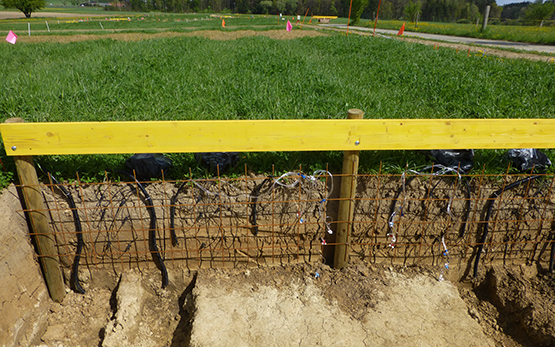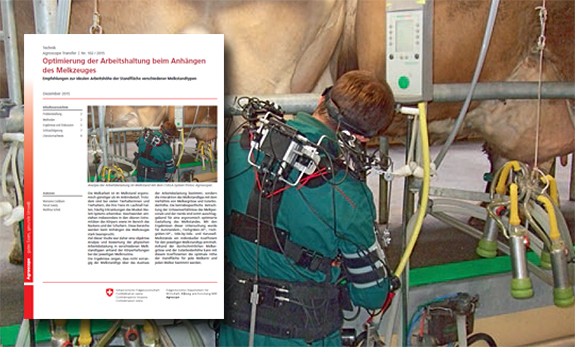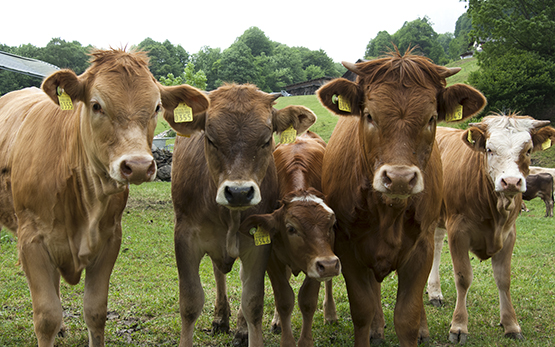Kienapfel-Henseleit K. I., Piccolo L. M., Cockburn M., Gmel A., Ruess D., Bachmann I.
Comparison of head–neck positions and conflict behaviour in ridden elite dressage horses between warm-up and competition.
Applied Animal Behaviour Science, 272, 2024, 1-11.
Helmerich P., Bachmann I., Gygax L.
Comparing lying behaviour of young riding horses on days in an individual indoor box, on an outdoor paddock alone, or in pairs and in the following night.
Equine Veterinary Journal, In Press, 2024, 1-5.
Heikkilä U., Ueda K., Gobbo Oliveira Erünlü N., Baumgartner M., Cockburn M., Bachmann I., Roig-Pons M., Rieder S.
Social network analysis of horses inferred from sensor ear tag and GPS-logger data.
Dans: EAAP 74 Annual Meeting. 26 Augus, Lyon. 2023, 652.
Heikkila U., Ueda K., Baumgartner M., Cockburn M., Bachmann I., Roig-Pons M., Rieder S.
Social network analysis of horses inferred from sensor ear tag and GPS-logger data.
Dans: EAAP 74 Annual Meeting. 26 August, Lyon. 2023, 1.
Baumgartner M., Krüger L., Zeitler-Feicht M.H., Bachmann I.
How horse-friendly are our stables?: Requirements vs. practice.
Dans: Research days - Horse Health and Grassland. 21 Sep, Ed. Sandgrueb Foundation, 2023, 40-41.
Baumgartner M., Krüger L., Zeitler-Feicht M.H., Bachmann I.
How horse-friendly are our stables?: Requirements vs. practice.
Dans: Research Days - Horse Health and Grassland - Annual Meeting of the Sandgrueb Foundation research partners. 21 September, Szepalma. 2023, 1.
Hiltebrand C., Roig-Pons M., Baumgartner M., Cockburn M., Doetterl S., Bachmann I., Keller T., Briefer S., Würbel H., Gmel A., Pauler C., Schneider M. K., Nasser R.
Site expérimental de Saint-Aubin : Projets de recherche en cours.
Dans: Jeudi au Haras. 20 juillet, Avenches. 2023, 1.
autres langues: allemand
Briefer S., Bachmann I.
Comment les chevaux expriment-ils leur stress : l'effet des « coping styles » sur les indicateurs comportementaux ?
Dans: 17e journée de recherche équine. 20 avril, Avenches. 2023, 18-19.
Wyss C., Zollinger A., Bachmann I.
Was wir aus dem Lernverhalten der Pferde für Ausbildung und Training lernen können.
Dans: Spezialwebinarreihe Wohlbefinden. 25. Mai, Ed. Verein Förderung Forschung Pferd FFP, Online. 2023, 1-7.
Zollinger A., Wyss C., Bardou D. , Bachmann I., Briefer S., Gmel A.
Box social pour étalons : Bilan des tests réalisés au Haras national suisse.
Dans: Journées sciences et innovations équines. 1er et 2 juin, Ed. Institut français du cheval et de l'équitation IFCE, Saumur. 2023, 1-4.
Bachmann I.
Das Pferdeleben im Stall bereichern.
Schweizer Archiv für Tierheilkunde, 7/8, 2023, 1-3.
Zollinger A., Wyss C., Bardou D., Bachmann I.
Social box: a new housing system increases social interactions among stallions.
Animals, 13, (1408), 2023.
Zollinger A., Martin S., Bachmann I.
17e Journée de recherche équine suisse.
Agroscope Science, 133, 2023, 1-44.
autres langues: allemand
Maigrot A.-L., Bachmann I., Briefer S.
How do horses express their stress: The effect of coping styles on subtle behavioural indicators.
Dans: Aktuelle Arbeiten zur artgemäßen Tierhaltung 2022. KTBL-Schrift 11530, Ed. KTBL, Darmstadt. 2022, 14-24.
Baumgartner M., Bachmann I.
Auslauf trotz Trockenheit.
Bayerisches Landwirtschaftliches Wochenblatt, 38, 2022, 26-26.
Zollinger A., Wyss C., Bachmann I., Bardou D.
Optimisation of individual housing of breeding stallions thanks to the possibility of physical contact.
Dans: Aktuelle Arbeiten zur Artgemässen Tierhaltung 2022. 26. November, Ed. Kuratorium für Technik und Bauwesen in der Landwirtschaft e.V., Darmstadt. 2022, 218-228.
Bachmann I.
Enrichment und Bewegungsanreize in der Pferdehaltung: Wie können wir die die restlichen 23 Stunden des Pferdetages bereichern?
Dans: Fachtagung der Tierschutzombudsstelle Steiermark. 9. November, Ed. Das Land Steiermark, Steiermarkhof. 2022.
Bachmann I.
Weidegang ist meist nur mit Kompromissen möglich.
Schweizer Bauer, 21. Mai, 2022.
Bachmann I.
Pferdeweiden – welche Gesetze gelten?
Pferdewelt, 2022, 45-47.
Wyss C., Zollinger A., Bachmann I.
Was wir aus dem Lernverhalten der Pferde für Ausbildung und Training lernen können.
Dans: FFP-Jahrestagung 2022 - Ausbildung und Training von Sportpferden. 2. Juli, Ed. Verein Förderung Forschung Pferdesport, Haltern am See. 2022, 1-7.








